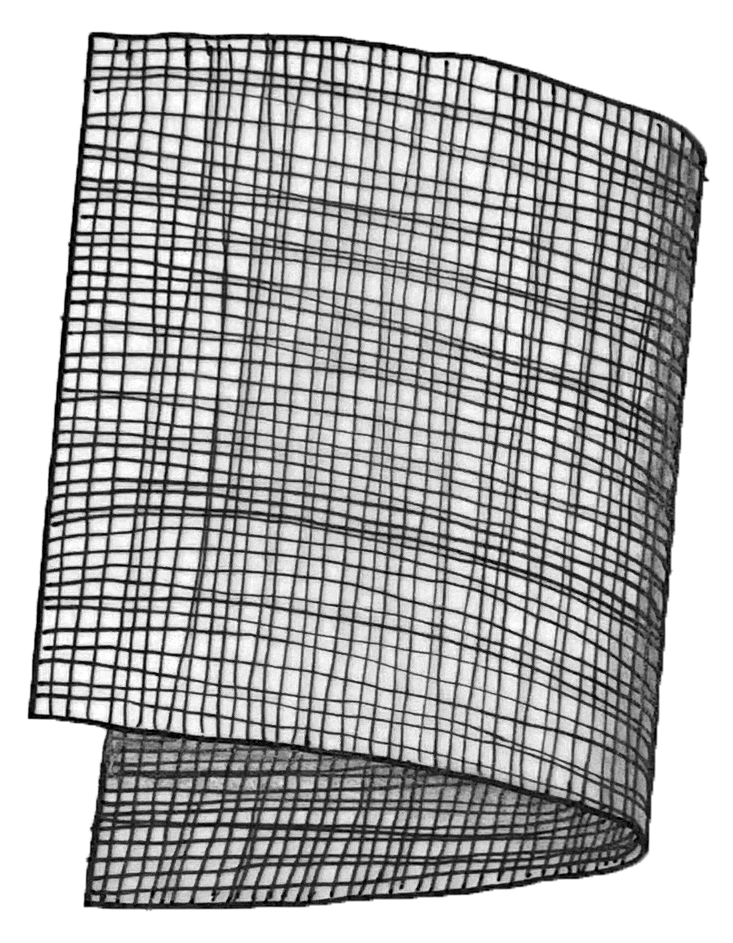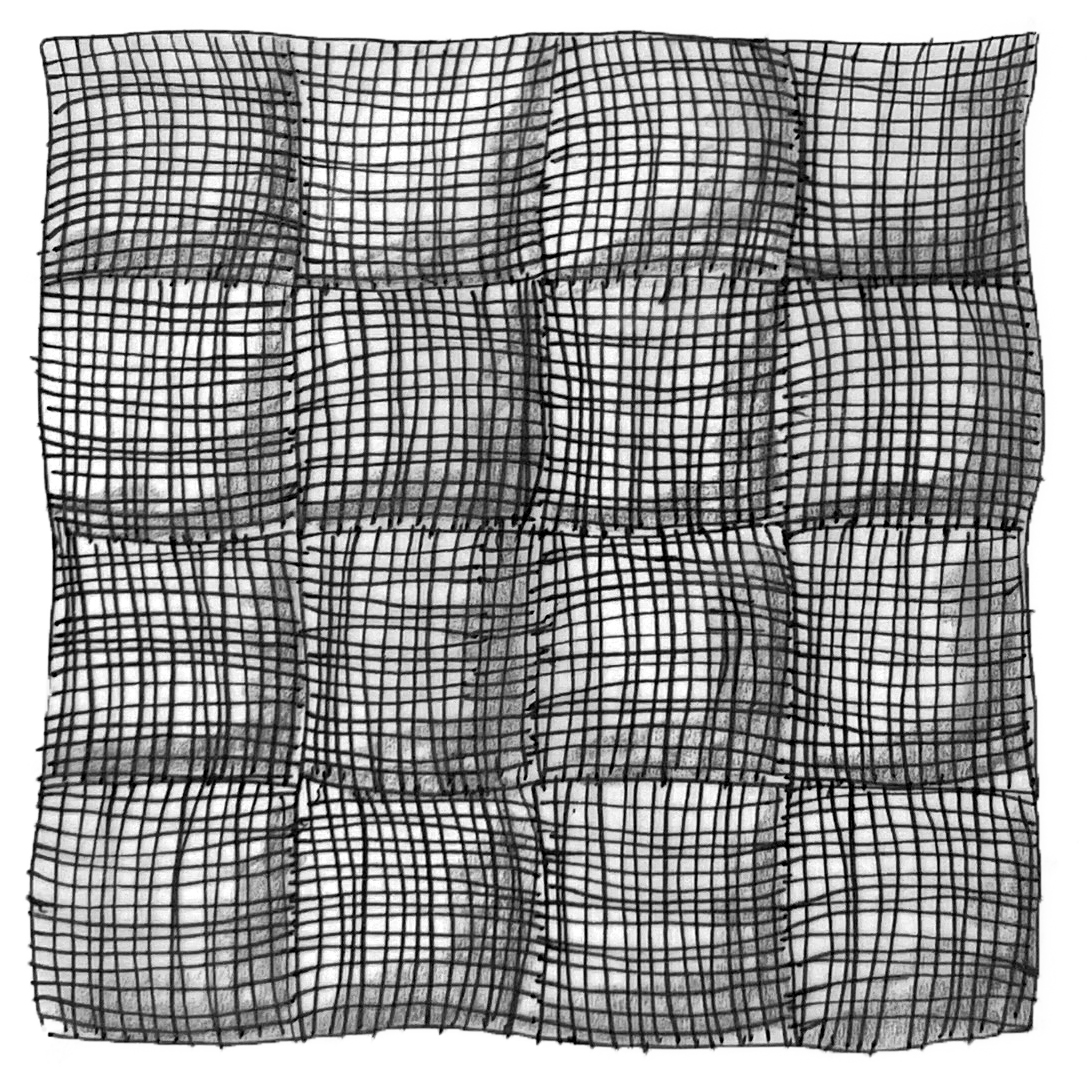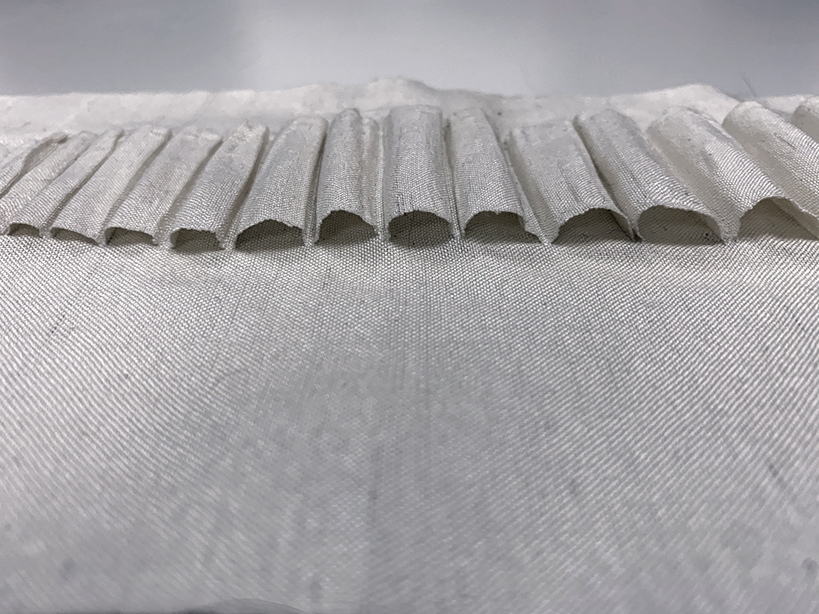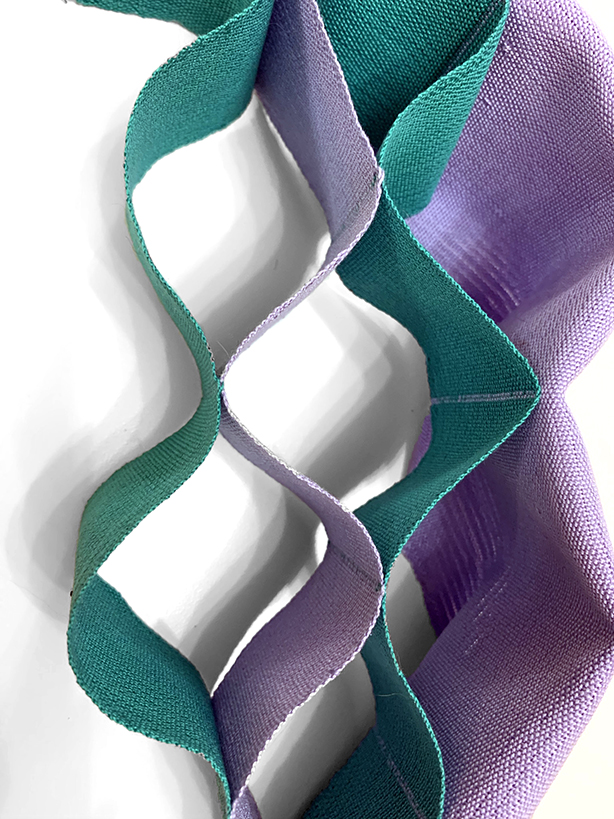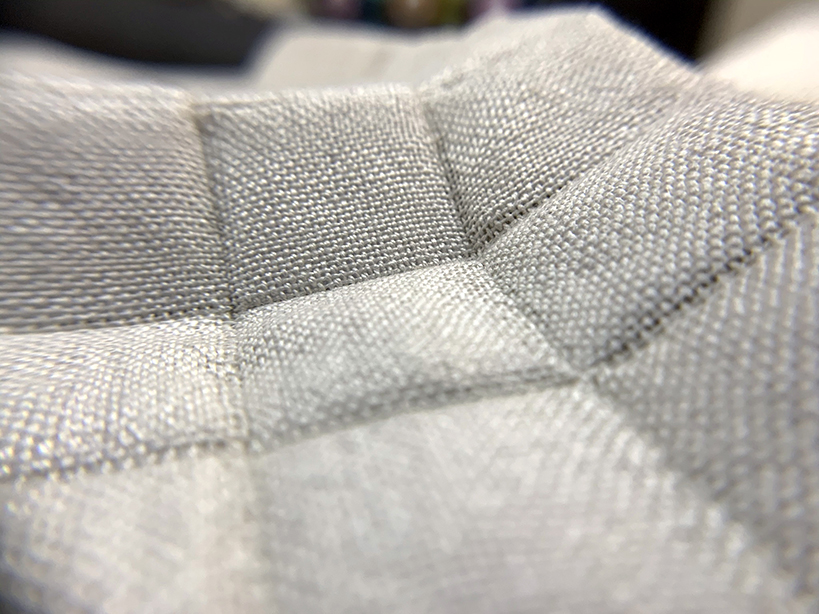Double cloth is where two cloths are woven simultaneously, one on top of the other. They may be two completely separate cloths or joined in several different ways:
- Along one selvedge to open up to double width
- Along both selvedges to create a warp-wise tube
- At horizontal points to create weft-wise tubes
- at various points long the warp and weft to create pockets
One weft yarn may be used for both cloths or a different yarn for each cloth. The cloths wil be joined at the selvedges if just one weft yarn is used.
Set up
A double cloth structure can be set up multiple ways. For me, the simplest way is to have one warp, at double sett, with a straight draft (as shown in the below draft). Then the ends on the odd shafts would be for one of the cloths (e.g. top) and the end on the even shafts would be for the other cloth (e.g. bottom). This only really works well if you want the same yarn type for each warp, and the same weft for each cloth. The warp could be made up with two different yarns but you may end us with one ‘baggy’ cloth due to different yarn properties, particularly the elasticity. The benefit it that a double cloth can be woven on a single back beam loom.
The main thing to remember is that the warp needs to be double sett to allow each cloth to be woven at the desired sett. The ends on each cloth need to be on separate shafts from each other, for example odds/evens, 1-4/5-8. The ends also need to be threaded alternately – one end from the top cloth next to one end from the bottom cloth etc.
Below is how I choose to draw out a double cloth draft. I have use black/white circles to visualise which warp/weft belongs to which cloth. You’ll see that I have also used ‘o’ and ‘x’. The ‘x’ represents the usual lifting of the shafts to create the structure. The addition of the ‘o’ represents the top cloth ends which will be lifted up out of the way while the bottom cloth is woven.
Most commonly, double cloths are woven using two back beams so that each cloth’s tension can be controlled separately.
Below is an example of a double cloth where one cloth/set of warp ends it threaded on shafts 1-4 and the other set on shafts 5-8. The ends from each cloth need to be threaded alternately to create evenly spaced cloths. The lifting plan shows how you can swap the cloths over, going from the black cloth on top to the white cloth on top. This would be a way of creating weft-wise tubes.
The draft could be further developed by placing blocks in to create multiple pockets. E.g. blocks of shafts 1/2, 3/4, 5/6, 7/8. This allows you to swap over the top and bottom cloths in both the warp and weft direction.
Weaving
The basic principle of weaving a double cloth if that you would weave one pick of the top cloth. Then lift all of the top cloth ends up and weave one pick of the bottom cloth. And repeat. The above has only shown plain weave structures. Therefore, four picks is one repeat. Depending on the number of shafts available other structures can be woven in each cloth, for example, you may want a 2/2 twill on the top cloth.
You may need to reconsider the method above if you have very different yarns for each warp. They may require different setts and therefore alternating the ends threaded may not work.
If different weft yarns are used in each cloth one cloth may build up more quickly than the other. This could be compensated for by weaving more picks in one cloth before weaving the next cloth. For example, weaving two top cloth picks for every one bottom cloth pick.
Once you get the hang of weaving two cloths simultaneously you’ll be able to think about other things you can do with this structure:
Pleats are made by weaving a double cloth where the top cloth is woven more quickly causing an excesss of fabric. This excess is secured to the bottom cloth with a plain weave at intervals. More than two cloths can be woven simultaneously. I have woven up to four. As long as you have at least two shafts for each cloth you can weave as many as you like.

